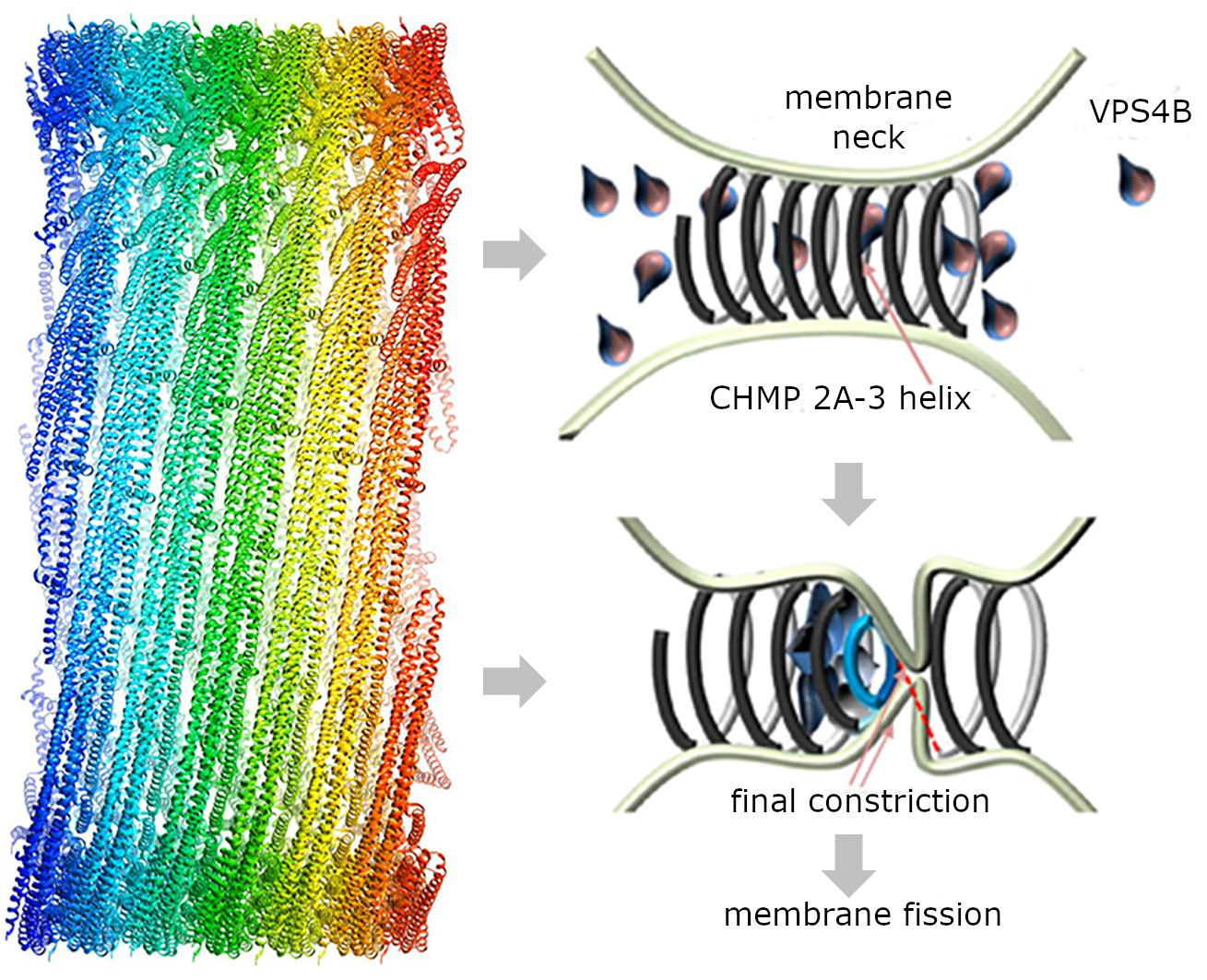Within the protein family, ESCRT-III members are present in evolution from prokaryotes to metazoans. They polymerize on membranes in order to remodel them, often to the point of membrane fission co-catalyzed by the activity of the ATPase VPS4. Various pathologies such as cancer and neuronal deficiencies are linked to the dysfunction of the ESCRT machinery. Notably ESCRT-III and VPS4 have been associated with late steps in membrane cleavage. It is therefore important to study the structure of the ESCRT machinery within a membrane context in order to provide insight into its membrane remodeling and cleavage activity during membrane repair, budding of enveloped viruses, and cytokinesis among others.
Researchers at IRIG [collaboration with Curie Institute Paris and University of Groningen, Groningen, Netherlands] provide first high resolution cryoEM structures of ESCRT-III filaments composed of
CHMP2A and
CHMP3 forming membrane-coated tubular structures
in vitro that resemble ESCRT-III filament architectures at virus or vesicle budding sites or the cytokinetic midbody.
The structures (3.3 Å and 3.6 Å) provide molecular details of helical filament polymerization, membrane interaction and support a model that predicts processive filament sliding upon remodeling by VPS4.
Moreover, single molecule studies confirmed that the ESCRT-III polymers are constricted and cleaved by VPS4
in vitro, suggesting that they constitute a minimal machinery that can cleave membrane necks via membrane fission.

Figure: Model of membrane constriction by ESCRT-III. On the left, atomic model of ESCRT-III filaments composed of a heterodimer of CHMP2A and CHMP3. The outer surface of the filaments interacts with membranes in a manner similar to the topology of membrane collars as shown in the diagram (right). VPS4 tightens the filaments that can cleave membrane necks
via membrane fission. Credit CEA
ESCRT = Endosomal Sorting Complex Required for Transport is a highly conserved cellular membrane remodeling machinery, consisting of five cytosolic protein complexes, including ESCRT-III and VPS4.
Citokinesis = division of the cytoplasm in the phases of meiosis and mitosis, to separate daughter cells.
CHMP2A = the charged multivesicular body protein 2a is encoded by the gene
CHMP2A.
CHMP3 = the charged multivesicular body protein 3 is encoded by the gene
VPS24.